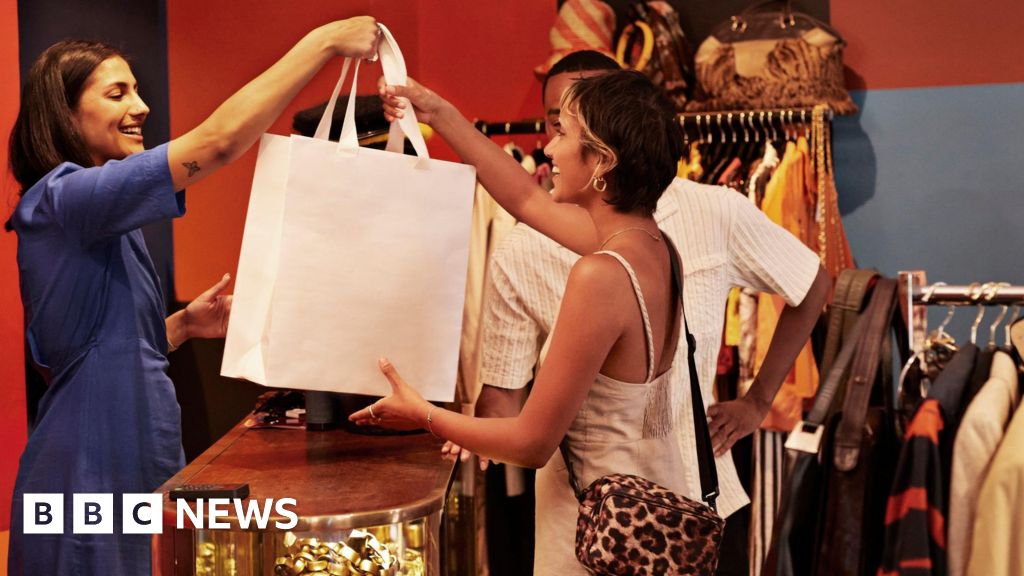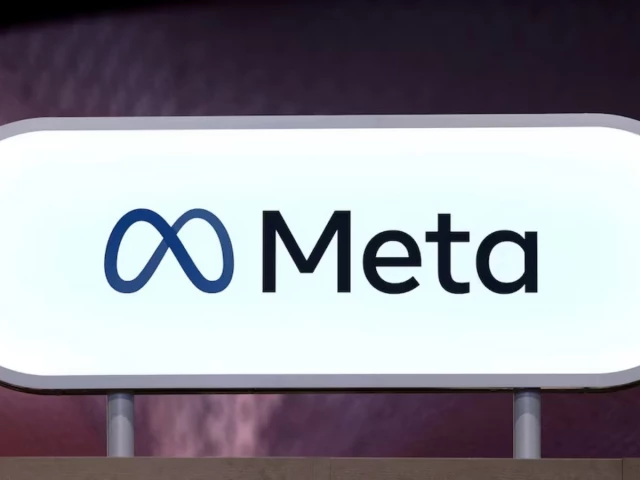Business
Retail sales boosted by sunny weather and football in July

Sunny weather and the women’s Euro football tournament helped to lift retail sales in July, according to the latest official figures.
Retail sales volumes rose by 0.6% in July, according to the Office for National Statistics (ONS), which was higher than analysts’ forecasts.
The release of the figures had been delayed by two weeks over concerns about the quality of the data.
The ONS has come under fire recently over the reliability of some of its statistics.
While sales volumes in July rose, sales in the three months to July were down 0.6% when compared with the previous three months.
“Supermarkets, sports shops and household goods stores had a strong start to the year, but spending there has fallen since March,” said the ONS’s director general of economic statistics, James Benford.
However, he added this was partially offset by strong sales online and at clothing and footwear stores.
Mr Benford apologised for errors in past data, and said the ONS had “improvement plans” in place.
The ONS had delayed the latest retail sales figures after it discovered a problem with its data, which meant that seasonal adjustments had not been made properly.
The latest release from the ONS revises most of the retail sales data for the past year.
“The new figures published today show a similar overall pattern of three-month on three-month growth, but with less volatile month-on-month changes,” Mr Benford said.
ONS statistics are used in deciding government policy which affects millions, and are used by the Bank of England to make key financial decisions.
The ONS said online retailers and clothing stores saw strong sales growth in July, which retailers put down to new products, the hot weather, and an increase resulting from the UEFA Women’s Euro 2025 tournament.
However, Paul Dales from Capital Economics warned that both these factors were boosts that “won’t be repeated”.
Dr Kris Hamer from the British Retail Consortium said July was a “good month for retail sales, as the warm, sunny weather and packed sporting schedule in the first half of the month got people spending”.
“Unfortunately, this level of sales growth makes little dent on the £7bn of new costs that retailers are having to shoulder following last year’s Budget.”
Business
Sold 30 items on Vinted? Don’t panic if you get a message about tax

Jennifer MeierhansBusiness reporter
 Getty Images
Getty ImagesJazz singer Billie van der Westhuizen started using Vinted about six months ago to sell clothes and shoes she hadn’t worn for ages.
“I got really into it and was selling loads of stuff,” she says. “Then I got a message saying I needed to enter my National Insurance number. It wasn’t clear at all why it was asking.”
Vinted users who have sold 30 items or made £1,700 in a year are being asked for their NI number, leaving many like Billie confused and some panicking that they will have to pay tax.
But this is not about any tax changes – it’s due to reporting rules for websites and apps that allow users to sell goods or services, including eBay, Etsy, Depop and AirBnb.
Billie, 30, from London, says she entered her NI number as prompted but in hindsight was not sure what it was about.
 Billie van der Westhuizen
Billie van der Westhuizen“I just sent it but I thought there’s no way they could tax the amount of money I’ve made off this,” she says.
“If I was making thousands maybe, but I reckon I’ve made maybe £500 and I’m selling things for less than I paid for them.”
The pop-up alert Billie received sends Vinted users to a form asking for their name, address and NI number “as required by UK law”.
Some Vinted sellers have posted screenshots of the messages on TikTok and Instagram asking if they have to give their details, and if they do, will they be taxed.
 Vinted
VintedOne user posted on Reddit: “Vinted is asking for my National Insurance number, does this mean I have to pay taxes? I barely make money on Vinted – what happens if I ignore this?”
Chartered accountant Abigail Foster says while a lot of people may panic when asked for tax information by Vinted, for most users this is nothing to worry about.
“If you’re simply selling your own second-hand clothes or household items, you won’t owe any tax, even when Vinted shares that data with HMRC,” she says.
“This rule is aimed at people who are effectively running a resale business, not those decluttering their wardrobes.”
It would be very easy for HMRC to tell if someone was trading by checking for multiple listings of the same product or items bought and quickly resold for higher prices, she adds.
New reporting requirements for digital platforms came into effect on 1 January 2024 with the government saying they would help it “bear down on tax evasion”.
Vinted sellers reported receiving in-app messages asking for their NI number around this time last year.
Information must be shared with HMRC by the end of the calendar year that sellers hit the 30 item or £1,700 threshold, according to Vinted.
 Vinted
VintedAn HMRC spokesperson said: “People remain responsible for their own tax affairs, and for assessing whether they need to complete a tax return to report trading income.
“As your side hustle grows, any unpaid tax might come under the spotlight.
“This could lead to an unexpected and possibly very large tax bill if you haven’t told us about the extra money you’ve been earning. That’s why it’s really important to stay on top of your tax affairs.”
Research commissioned by HMRC in 2022 suggested around one in 10 UK adults participated in what it called the “hidden economy” – earnings that are entirely or partially concealed from the tax authority to avoid paying taxes.
What are the tax rules for online selling?
- Platforms must tell HMRC about anyone who sells more than 30 items or whose total sales hit £1,700 in a year
- This does not automatically mean these people have to pay tax
- Selling your own clothes or other items is not taxable if you’re selling them for less than you originally paid as you are not making a profit
- Tax only applies if you are buying stock to resell, or making more than £1,000 in profit per year
- If you sell an item for more than £6,000, you may need to pay Capital Gains Tax.
- You can use HMRC’s online tool to check if you need to tell the authority about your income
Business
England World Cup match times ‘welcome boost’ for pubs and bars

The announcement that England’s group stage matches in the World Cup will kick off before midnight is a “welcome boost” for pubs and bars, the boss of an industry body has said.
There had been some concerns among fans that late fixtures could curtail celebrations as next summer’s tournament will take place in the US, Canada and Mexico, meaning some games will not start until 3am UK time.
Dates, kick off times and stadiums for group stage matches were confirmed on Saturday, with Thomas Tuchel’s side to face Croatia at 9pm UK time on June 17, 3pm local time in Texas, at the home of the Dallas Cowboys NFL team.
The second match against Ghana on June 23 is a 4pm kick-off in Boston, 9pm in the UK, while the final group game against Panama at the MetLife Stadium in East Rutherford, New Jersey, is a 5pm kick-off local time – 10pm in the UK on June 27.
Kate Nicholls, the chairwoman of UK Hospitality, said: “This news is a welcome boost for the hospitality industry.
“Everyone knows that if you aren’t able to attend the game itself, your local pub or bar is the next best place to do it.”
But there are concerns that venues in Scotland risk missing out on that boost with later kick-offs for their national team.
There will be late nights for armchair fans watching Scotland’s games, with the opening game against Haiti in Boston kicking off at 9pm local time – 2am on June 14 back at home.
The second game against Morocco on June 19 is also in Boston, kicking off at 6pm – 11pm in the UK, and in the final group match they will take on Brazil in Miami on June 24, again at 6pm, or 11pm in the UK.
Paul Togneri, of the Scottish Beer and Pub Association, called for flexibility from licensing boards following the announcement.
“This is a once-in-a-generation moment for Scotland fans and should be a major boost for Scotland’s pubs, but with kick-offs at 11pm and 2am, that opportunity is at risk,” he said.
“Each match should give an estimated £3 million boost to Scotland’s pubs but we need licensing boards to show flexibility and allow pubs to open their doors, that’s why we’re calling for temporary licensing statements for the whole of the tournament.
“People will rightly want to come together and celebrate, like they did a few weeks ago when we qualified. Let’s make sure they can do that in a safe, regulated environment, and give our pubs a chance to benefit from this incredible occasion. No Pubs, No Party.”
Football fans across the UK may appreciate the 8pm kick-off for the final, which will take place at the MetLife Stadium in New Jersey on July 19.
For England and Wales, the Government on Thursday launched a consultation on extending pub licensing hours for the tournament next summer.
If approved, already licensed venues could have their licensing hours extended for the semi-finals and final until 1am, if matches for England, Wales, Scotland or Northern Ireland kick-off at 9pm or earlier UK time.
The power was recently employed for the Women’s Euros in summer and it was also used during the King’s coronation in 2023.
Ms Nicholls said: “Big sporting events always provide a sales boost for the sector and operators will be pulling out all the stops to ensure fans get the very best experience, as they come together to cheer on the home nations teams this summer.”
Business
Meta strikes multiple AI deals with publishers | The Express Tribune

.
BENGALURU:
Meta has struck several commercial AI data agreements with news publishers including USA Today, People Inc, CNN, Fox News, The Daily Caller, Washington Examiner and Le Monde, the company said on Friday.
The tie-ups will allow the Facebook parent to provide “real-time” news and updates through its artificial intelligence chatbot by linking to articles and websites from the publishers.
The move comes as the social media giant looks to attract more users to its AI services amid increasing competition in the market.
-

 Sports6 days ago
Sports6 days agoIndia Triumphs Over South Africa in First ODI Thanks to Kohli’s Heroics – SUCH TV
-

 Tech7 days ago
Tech7 days agoGet Your Steps In From Your Home Office With This Walking Pad—On Sale This Week
-

 Fashion6 days ago
Fashion6 days agoResults are in: US Black Friday store visits down, e-visits up, apparel shines
-

 Entertainment6 days ago
Entertainment6 days agoSadie Sink talks about the future of Max in ‘Stranger Things’
-

 Politics6 days ago
Politics6 days agoElon Musk reveals partner’s half-Indian roots, son’s middle name ‘Sekhar’
-

 Tech6 days ago
Tech6 days agoPrague’s City Center Sparkles, Buzzes, and Burns at the Signal Festival
-

 Sports6 days ago
Sports6 days agoBroncos secure thrilling OT victory over Commanders behind clutch performances
-

 Entertainment6 days ago
Entertainment6 days agoNatalia Dyer explains Nancy Wheeler’s key blunder in Stranger Things 5







